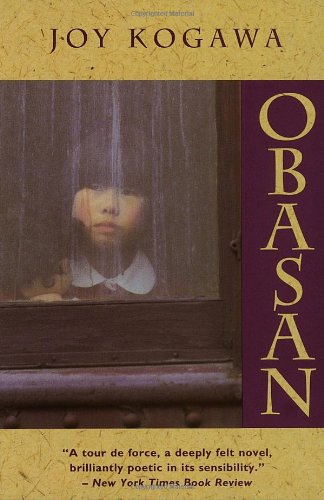If you grew up in British Columbia like I did, chances are you read this semi-autobiographical novel in high school. Obasan, or aunt in Japanese, tells the story of Naomi Nakane, a schoolteacher in a small Canadian town, who recounts her painful experiences as a Japanese-Canadian child in World War Two-era British Columbia and the impact these experiences had on her and her family.

Fans of former Star Trek star and social media darling George Takei will likely be familiar with the forced internment of Japanese-Americans during the Second World War – the music Allegiance is based on the experiences of Takei and his family, who were forcibly removed from their homes and imprisoned following the Japanese attack on Pearl Harbour.
The internment of citizens of Japanese descent occurred in Canada as well, beginning after the attack on Pearl Harbor on December 7, 1941, and lasting until 1949, several years after Japan’s surrender. Japanese-language newspapers were shuttered, and the government seized and sold property owned by Japanese Canadians, including business and homes. Like Kogawa’s character Naomi Nakane, Japanese Canadian families were relocated to small communities in the interior of the country, where many were forced to remain, even after the end of the war. Japanese Canadian families lost most or all of their material goods, lived in harsh conditions and experienced systemic racism and prejudice, all of which left emotional and psychological scars on the people who lived through this period.
Obasan is a sensitive, deeply moving, painful yet quietly hopeful account of the internment of a Japanese-Canadian family and the lingering impact the experience had on individuals, particularly children. Kogawa weaves several stories and perspectives together, moving from Naomi’s adulthood in 1970s Alberta to her childhood in the 1940s in Vancouver and Slocan, British Columbia, and introduces characters of several generations from both Canada and Japan. The trials Naomi and her family endure are terrible, pushing the characters to their breaking points, and Kogawa doesn’t shy away from hard, painful truths. Sexual abuse, animal cruelty, parental abandonment, depression, racism, isolation, repression, cultural taboos, violence, war, death – all are discussed and laid bare in this complex novel.
When first published in 1981, Obasan received lukewarm reviews. The prose was complex and lyrical, which some reviewers found too complex, even confusing. The content was graphic and unsettling, which some readers considered too negative for young people. Perhaps more unsettling, though, was the fact that Obasan called on Canadians to admit to a dark, embarrassing, painful period in their history, and accept the lingering damage their actions had caused countless innocent people. Obasan refused to allowed Canadians to hide from their past, and called on all citizens to look to their past to ensure that such dark times could never be repeated.
Obasan went on to win the Books in Canada First Novel Award and the Canadian Authors Association Book of the Year Award, and Kogawa, who began her literary career as a poet, was awarded the Order of Canada, the Order of British Columbia, and the Order of the Rising Sun. The novel has since become a modern Canadian classic, and is required reading in many high schools and colleges throughout the country, but particularly in Kogawa’s home province of British Columbia.




















